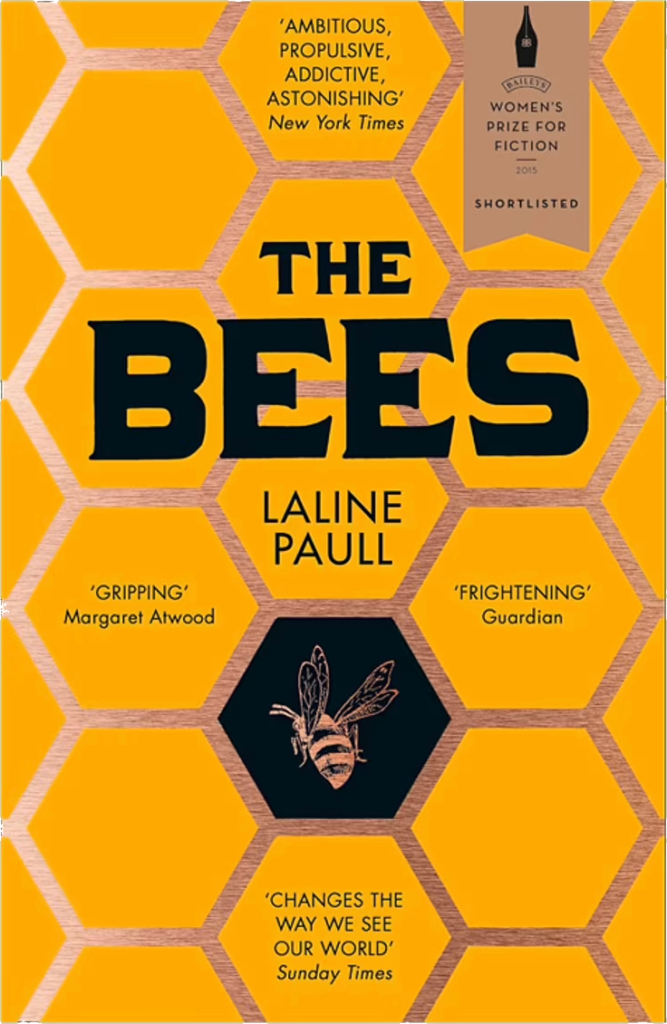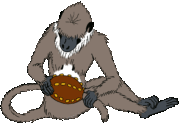by Laline Paul
The New York Times describes this book as “Ambitious, propulsive, addictive, astonishing” and that isn’t hyperbole. One of the plaudits inside the cover of the paperback edition is from the mystery novelist Martin Cruz Smith, who calls it “The best novel of its kind since Watership Down“.

On one level, I can see the similarities. Both books are action thrillers with a large dose of politics, set in a non-human animal society. Both books make a considerable effort to remain true to the real life behaviour and ecology of their subjects. In both books, the characters are given human speech, a conscious culture and a folklore which, for the bees, is expressed in cryptic friezes on the waxen walls of a secret chamber; but both sets of characters otherwise have realistically limited understanding. The rabbits in Watership Down count “One, two, three, four, lots”, and only one or two of the most brilliant among them are able to comprehend that if a boat floats on water, and you sit on the boat, you’ll be floating on water too. The thoughts of the bees are entirely restricted to their own immediate world, and heavily directed by instinct.
Watership Down, however, was set among mammals – and cute ones at that. The Bees takes place in a profoundly alien society: a teeming insect city, a living computer, where smell is knowledge and pheromones can wipe and reset a character’s mind; the queen’s chemically-expressed love and will control her people like puppets on invisible strings; individuals are merely instances of a particular design (all named after plants) of which there may be thousands just like her; and execution is an ever-present threat, carried out by a draconian purity-police who cull the diseased, the deformed and the non-conforming, even as high as the queen herself.
Born in a man-made hive in a man-made orchard, the heroine, Flora 717, is an instance of the Flora object, lowly hive-cleaners who normally have no speech, and she is nearly killed on hatching for her large size and coarse appearance and her unexpected ability to speak. But her life is saved by a kind of priestess, an instance of the Sage object, who sees potential in her. Against a background of war, pestilence, near-famine and ferocious rivalries, the story follows Flora’s rise to the dizzy ranks of forager and nursemaid, her platonic friendship with a drone who is as odd among his kind as she is among hers, and her long-term, determined efforts to hatch a parthenogenetic egg of her own and, ultimately, to make her daughter a queen.
The setting, and the way the few humans speak, suggests this story is taking place in the UK, or at a stretch anywhere in Europe or North America (do people use the term “brownfield site” in North America?). Flora is hinted to have African killer bee genes because she is larger and darker than her sisters. I thought at first that the author had made a mistake, because the first sources I found said that the only bees known to have the gene for thelytoky, where a worker bee is able to lay a female egg by parthenogenesis, without mating, is the Cape honeybee, and Cape honeybees are a) smaller than regular honeybees and b) not found outside Africa. Normally if worker bees lay unfertilised eggs the offspring is a drone, a male. But further digging showed that Laline Paul was right the first time – thelytoky is very rare in bees other than the Cape honeybee, but it seems to occur very occasionally in all strains of honeybee, so Flora’s life story is definitely possible, as well as touching and exciting.
I note for the record that 15 or 20 years ago there was a comic series called Clan Apis which attempted to do something similar in its realistic portrayal of bee behaviour: but the story as I remember it was a lot less dark and fraught. It simply told the story of a regular worker bee from birth to death, whereas Flora 717 is decidedly irregular.
